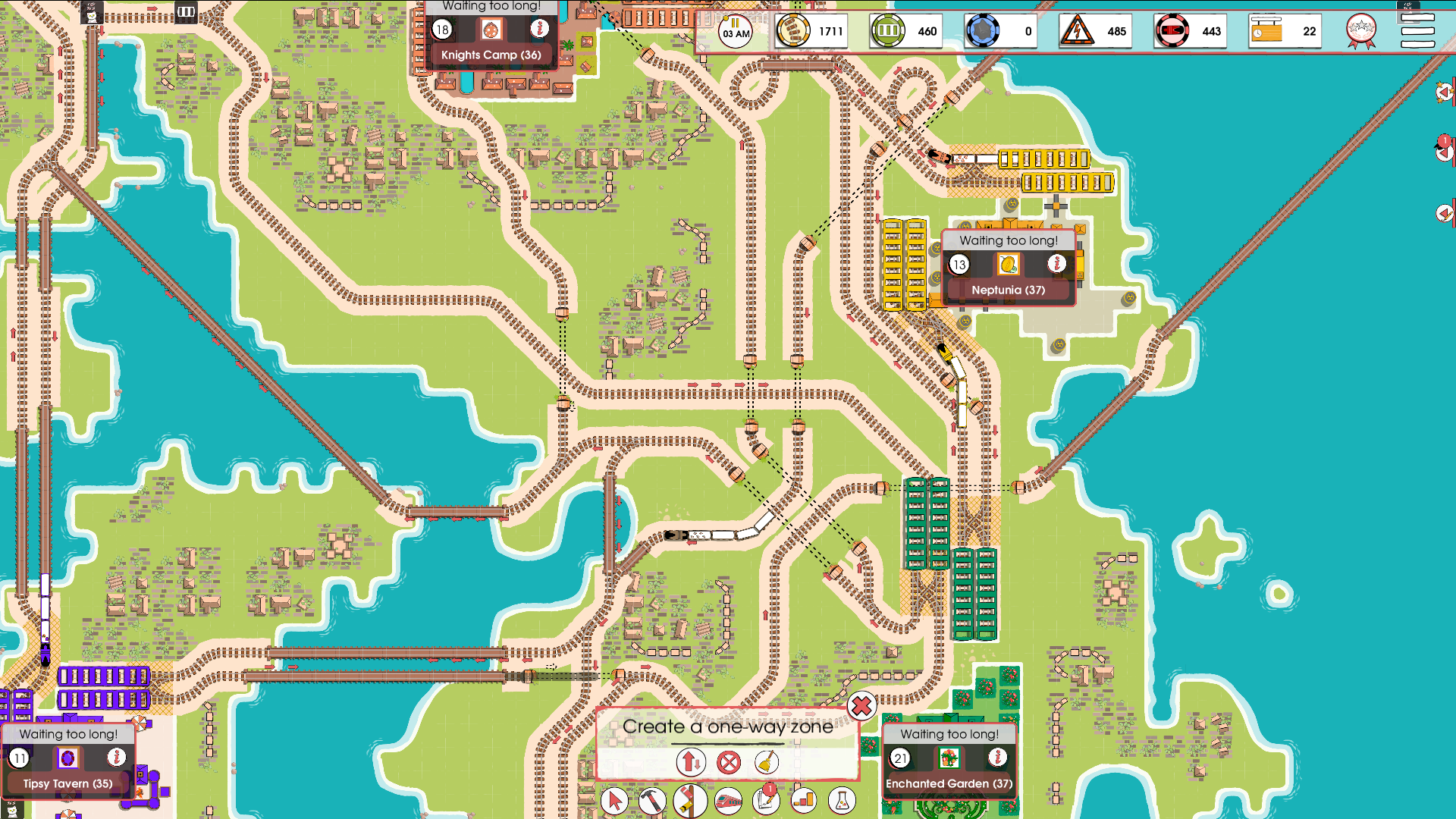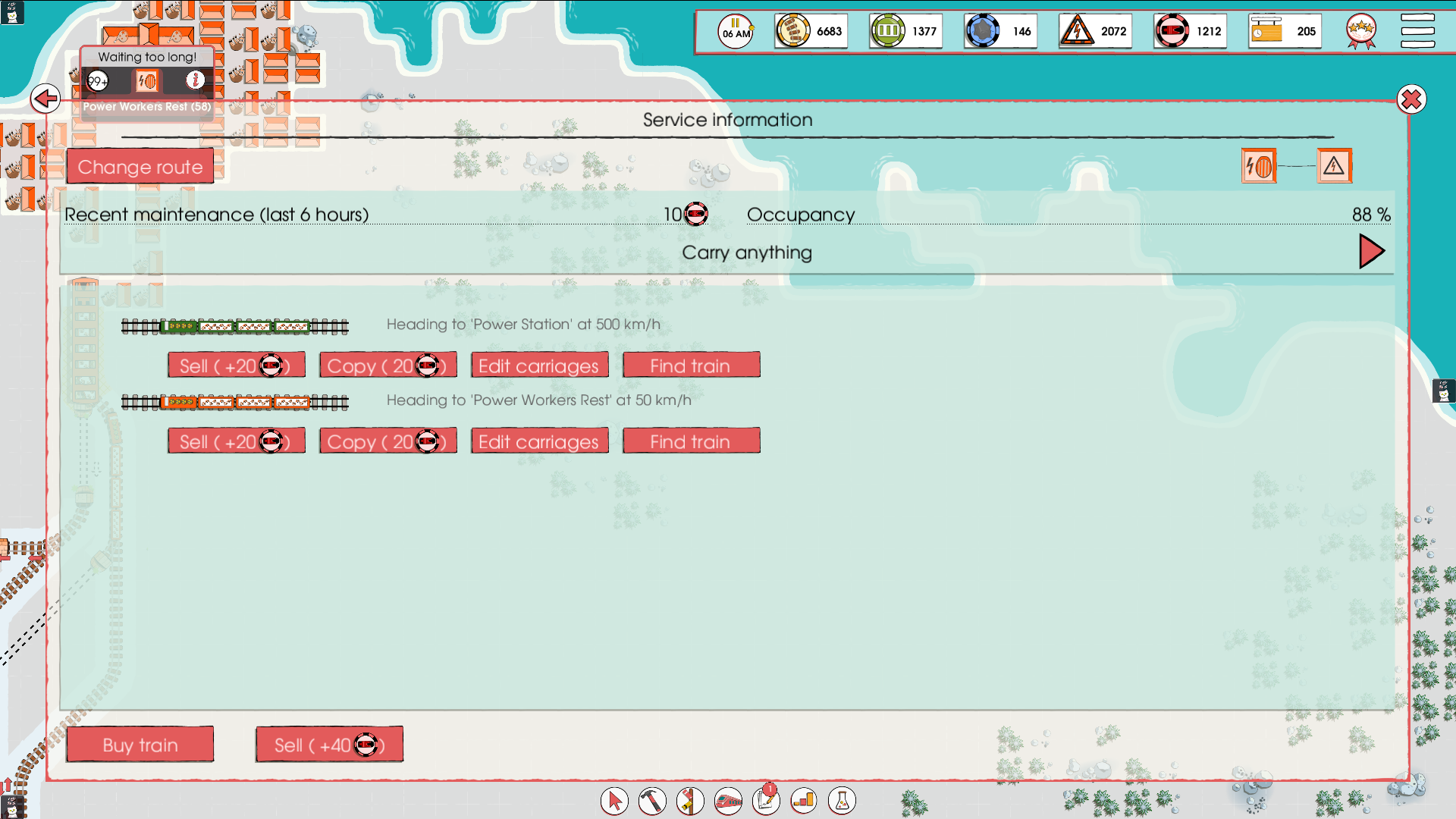We have been working on a train management game called Iron Roads over the past few months. Now that it is beyond the prototype phase and approaching its public debut at Steam’s summer NextFest, we thought it would be a good time to start a devlog.
Iron Roads is a train management game in which players lay tracks, buy trains and set their routes to establish train networks that connect people and cargo to the towns and places they need to be. Our initial focus will be on PC platforms, but if all goes well, we hope to release on mobile platforms and, if the stars really align, consoles.
With Iron Roads we are aiming to create a train management game with the deep sandboxy nature of OpenTTD that is as easy to pick up as a game like Mini Metro.
Given all the train management games out there, why have we decided to add to the collection? We love the depth of games like OpenTTD and Simutrans, and the creative possibilities their sandboxes give players, but we wanted to create a game that is easier to learn while still maintaining their depth. Mini Metro’s beauty and immediate accessibilty was an influence on this aspect of our design.

A final inspiration for Iron Roads is the humour and whimsy of the Bullfrog management games, a torch carried today by games like Lets Build a Zoo, Overcrowd: A commute ‘em up, or the excellent Two Point games.
Progress so far
The version of Iron Roads we have now is developed from the second prototype we built.
The first prototype had a hexagonal grid, isometric art, a wave function collapse-style constraint solver to lay out art, and it was written in Golang. We initially tried to cram everything we had learned from making our previous games into this early prototype, without considering whether it really benefitted the game. This resulted in a somewhat player-unfriendly prototype buckling under the weight of its complexity.
We loved how the art looked (shown above), but the isometric perspective resulted in some sprites occluding tiles behind them, making it less clear what tile a click corresponded to. Hex tiles also lead naturally to six directions on the board, which proved inferior for building layouts to square tiles, which naturally allow eight directions. Technically, Golang is a fantastic language to write games in, and we were sad to leave it behind, but getting a version of that prototype running on mobile was becoming very time-consuming. More worryingly it wasn’t clear consoles would be a possibility at all. In general, our enthusiasm had gotten the better of us, we had added unnecessary complexity everywhere, and it hampered both development and gameplay.
After making the painful decision to ditch our work entirely, we started from scratch on the second (and current) incarnation of Iron Roads as a top-down game, with square non-overlapping tiles, written in C, and with a straightforward manual process for laying out art. Freed from the unnecessary complexity, it didn’t take long to functionally catch up with the previous prototype. More importantly, iterating on systems was quicker, and we could focus on building a game players would enjoy.

What next?
Right now we are playtesting internally, iterating systems to perfect the balance, and improving on the user interface. We have finished most of the tutorial ‘level’ (we need to decide whether these will be called campaigns / scenarios / maps / levels, but you get the idea), and we’ve started on a second larger one that allows for more complex train networks.
Incidentally, we have found Jesse Schell’s book, The Art of Game Design, an invaluable prompt to make us look at Iron Roads from different perspectives (lenses as they’re referred to in the book).
These first two maps will form the demo of Iron Roads that will be part of Steam’s NextFest in June. In preparation for this we will be playtesting with willing volunteers. Please get in touch if this is something you’d like to be involved with, we’d be forever grateful! The best way to do so is to email us or drop by our Discord.










